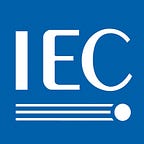Halogens are the elements that make up Group 17 on the periodic table: fluorine (F), chlorine (CI), bromine (Br), iodine (I) and astatine (At). The term halogens comes from the Greek for ‘salt former’ because when halogens react with metals, they produce a wide range of salts.
Modern utilization of halogens is extensive. They are used in swimming pools (chlorine and bromine), drinking water (chlorine and fluorine), toothpaste (fluorine) as well as in table salt (chlorine). Apart from astatine, traces of halogens can be found in the human body and are considered essential for good health.
Halogens are also used widely in electrical and electronic products. For example, they can be found in printed circuit boards, components such as connectors, ion batteries, electrical cables as well as in the plastic cases around television sets and mobile telephones.
Why are halogens used?
The widespread use of halogens in electrical and electronic products can be attributed to three factors: their performance properties, relative low cost and abundance of the raw material. Most notably, halogens are used as flame retardants since some halogen-derived compounds provide extremely high resistance to heat which can limit combustion in a fire.
The popular halogen-based compound, polyvinyl chloride (PVC), is one of the most widely used plastics in the electronics industry due to its flame, moisture and abrasion resistance. Other halogen-based compounds have been developed for their ability to withstand specific chemicals and solvents. The halogen-derived compound, fluorinated ethylene propylene (FEP), is often used for the insulation of cables given its ability to withstand high temperatures.
In many cases, halogenated materials can provide essential product performance at a lower cost compared with alternative solutions.
But concerns are mounting
While halogens can provide many benefits, they are also associated with risk. Halogen compounds, if ignited in a fire, release corrosive and toxic gases. During World War I, halogens were an active ingredient in the infamous mustard gas which caused blindness and suffocation.
In what is considered to be the worst disaster in telecommunications history, a fire broke out at the US-based Hinsdale Central Office, a telephone switching centre, in May 1988. Resulting in a loss of service to thousands of customers, the heavy smoke from the fire caused extensive damage to equipment. The central process of the phone switch, although not directly involved in the fire, needed to be replaced due to the effects of acid corrosion.
Toxic fumes emitted by halogen compounds are another reason for concern. In addition to the material damage caused by the Hinsdale fire, toxic fumes emitted by the burning electronics resulted in chemical fume inhalation by some firefighters. Similarly, a devastating fire at a subway station in Daegu, South Korea in 2003, resulted in a toxic black smoke which prevented firefighters from entering the station to rescue victims for over three hours.
Because the incineration of halogenated materials releases toxins into the atmosphere, risks of creating a toxic waste environment exist in countries where the disposal of electrical and electronic goods is not well managed.
As a result, some countries have put in place regulations to restrict the use of certain hazardous substances. In Europe, some halogenated compounds have been restricted because of their high toxicity. In 2018, IEC issued a new edition of IEC 62474 on hazardous materials reporting. As part of this standard, IEC maintains a database of relevant regulations related to halogen substances in electrical and electronic products.
In addition, a number of IEC technical committees have developed standards that include criteria to limit the amount of halogens in applications where safety in case of fire needs to be safeguarded, such as with electric cables.
More recently, halogens have come under scrutiny given the looming scarcity of resources and the increased attention given to the recycling of materials such as flame retardants. In Europe, legislation has been put in place that limits the use of halogenated flame retardants in certain plastics such as those used for the enclosures of electronic displays.
Manufacturers have also begun to address concerns with certain halogen substances by developing products with limited halogen content. However, the terms employed to describe the halogen content are not standardized and can often have different meanings depending on the manufacturer, the industry or the products for which the material is being used.
Role of standards
IEC, along with other standards development organizations and environmental performance programmes, is developing standards for the quantification of halogen content in products.
However, inconsistencies exist in the terminology used as well as in the test methods and requirements. Different terms like halogen free, non-halogenated, zero halogen and low halogen are sometimes used to express similar halogen content. Different limits for halogens are sometimes used despite applying the same term. In some cases, similar terms are used when referring to different halogen types.
The reasons for these discrepancies are varied. For example, the terminology may be specific to certain categories of products or may have been developed when certain kinds of data were not yet available. Regardless of the reasons, the variety of terminology in existence and the definitions of the terms creates confusion within industry and its supply chain.
Guidance is needed in order for the terminology used for halogen-related provisions to be uniform and clear. Careful consideration is also needed when selecting test methodology to determine halogen content. The IEC Advisory Committee on Environmental Affairs (ACEA) is developing a Guide for standards developers on this topic.
Halogens, as a whole, cannot be classified as being a material of concern. Rather, the identification and classification of halogens into specific risk groups must be defined based upon a scientifically sound approach.
*This information provides a general overview about halogens. It is not intended to serve as an official IEC position.
A version of this story originally appeared in the print edition of e-tech
